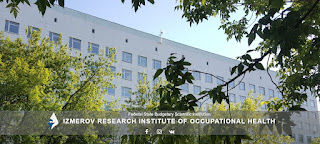L'agenzia federale US Access Board riconosce la elettrosensibilità
L'agenzia federale US Access Board riconosce la elettrosensibilità
INel 2002, il Comitato per la conformità delle barriere architettoniche e dei trasporti, noto anche come Consiglio di accesso degli Stati Uniti, ha pubblicato nuove linee guida sull'accessibilità per le strutture ricreative coperte dall'American with Disabilities Act (ADA).
Individui con MCS e elettrosensibilità hanno presentato un numero considerevole di commenti scritti e hanno partecipato alle riunioni di informazione del pubblico sul progetto di norma finale. Hanno riferito che i prodotti chimici utilizzati nelle strutture ricreative, come il cloro usato nelle piscine e nelle spa, e i pesticidi e i fertilizzanti sintetici utilizzati nei campi da golf, sono barriere che impediscono loro di accedere a tali strutture. Hanno chiesto al consiglio di amministrazione di includere disposizioni nella norma finale per rendere accessibili loro le strutture ricreative.
Il Board riconosce che MCS e sensibilità elettromagnetiche possono essere considerate disabilità ai sensi dell'ADA se compromettono così gravemente le funzioni neurologiche, respiratorie o di altro tipo di un individuo da limitare sostanzialmente una o più delle principali attività di vita dell'individuo. Il consiglio di amministrazione intende esaminare attentamente le esigenze di questa popolazione e intraprendere attività che affrontano le questioni dell'accessibilità per queste persone.
INel 2002, il Comitato per la conformità delle barriere architettoniche e dei trasporti, noto anche come Consiglio di accesso degli Stati Uniti, ha pubblicato nuove linee guida sull'accessibilità per le strutture ricreative coperte dall'American with Disabilities Act (ADA).
Individui con MCS e elettrosensibilità hanno presentato un numero considerevole di commenti scritti e hanno partecipato alle riunioni di informazione del pubblico sul progetto di norma finale. Hanno riferito che i prodotti chimici utilizzati nelle strutture ricreative, come il cloro usato nelle piscine e nelle spa, e i pesticidi e i fertilizzanti sintetici utilizzati nei campi da golf, sono barriere che impediscono loro di accedere a tali strutture. Hanno chiesto al consiglio di amministrazione di includere disposizioni nella norma finale per rendere accessibili loro le strutture ricreative.
Il Board riconosce che MCS e sensibilità elettromagnetiche possono essere considerate disabilità ai sensi dell'ADA se compromettono così gravemente le funzioni neurologiche, respiratorie o di altro tipo di un individuo da limitare sostanzialmente una o più delle principali attività di vita dell'individuo. Il consiglio di amministrazione intende esaminare attentamente le esigenze di questa popolazione e intraprendere attività che affrontano le questioni dell'accessibilità per queste persone.
U.S. Access Board recognized electromagnetic sensitivity as real and a potential disability in 2002
“Advancing full access and inclusion for all”
In 2002, the Architectural and Transportation Barriers Compliance Board, also known as the United States Access Board, issued new accessibility guidelines for recreation facilities covered by the Americans with Disabilities Act (ADA).
“The Access Board is an independent federal agency that promotes equality for people with disabilities through leadership in accessible design and the development of accessibility guidelines and standards. Founded in 1973…”
During the process of developing these guidelines, the Board held public hearings, and it received “substantial” comment from those who are electromagnetically sensitive. In its final rule, the Access Board stated:
- The Board recognizes electromagnetic sensitivities may be considered a disability under the ADA if they so severely impair neurological, respiratory or other functions of an individual that it substantially limits one or more of the individual’s major life activities.
- The Board planned to develop technical assistance materials on best practices to accommodate the electromagnetically sensitive.
- The Board planned to sponsor a project on indoor environmental quality which would develop an action plan for reducing electromagnetic fields in the built environment.
Here is the statement from the Final Rule, published in the Federal Register, September 3, 2002:
General Issues
…
Multiple Chemical Sensitivities and Electromagnetic Sensitivities
Individuals with multiple chemical sensitivities and electromagnetic sensitivities submitted a substantial number of written comments and attended the public information meetings on the draft final rule. They reported that chemicals used in recreation facilities, such as chlorine used in swimming pools and spas, and pesticides and synthetic fertilizers used on golf courses, are barriers that deny them access to those facilities. They requested the Board to include provisions in the final rule to make recreation facilities accessible for them.
The Board recognizes that multiple chemical sensitivities and electromagnetic sensitivities may be considered disabilities under the ADA if they so severely impair the neurological, respiratory or other functions of an individual that it substantially limits one or more of the individual’s major life activities. The Board plans to closely examine the needs of this population, and undertake activities that address accessibility issues for these individuals.
The Board plans to develop technical assistance materials on best practices for accommodating individuals with multiple chemical sensitivities and electromagnetic sensitivities. The Board also plans to sponsor a project on indoor environmental quality. In this project, the Board will bring together building owners, architects, building product manufacturers, model code and standard-setting organizations, individuals with multiple chemical sensitivities and electromagnetic sensitivities, and other individuals. This group will examine building design and construction issues that affect the indoor environment, and develop an action plan that can be used to reduce the level of chemicals and electromagnetic fields in the built environment.
Federal Register /Vol. 67, No. 170 /Tuesday, September 3, 2002 /Rules and Regulations
Here is the PDF of the final rule
The original link (no longer available) was http://www.access-board.gov/recreation/final.htm
The Federal Register notice can be found here:http://web.archive.org/web/20051103220404/http://www.access-board.gov/recreation/final.pdf


Commenti
Posta un commento